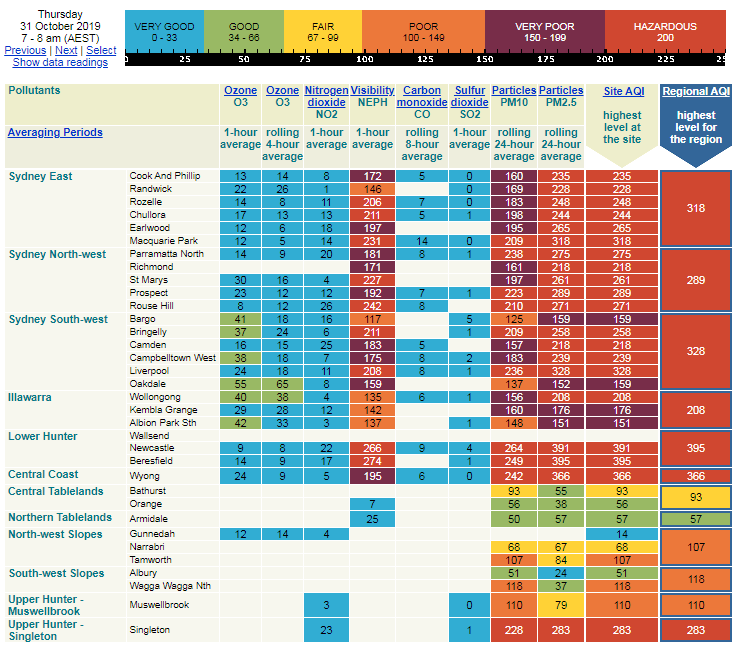Stay Safe
Air pollution has reached hazardous levels across all areas of Sydney, Wollongong, the Central Coast, Newcastle and Singleton today. Dangerous fine particle pollution is off the charts. Sydney is currently among the most polluted cities in the world, ahead of Dhaka, Karachi, Yangon, Hanoi and Shanghai.

Stay safe out there today, folks.
Air pollution has reached hazardous levels across all areas of Sydney, Wollongong, the Central Coast, Newcastle and Singleton today. Dangerous fine particle pollution is off the charts.
Wollongong is at 224% of the World Health Organisation guidelines. Beresfield near Newcastle is a scarcely believable 395%. Sydney is currently the 13th most polluted city in the world, ahead of Dhaka, Karachi, Yangon, Hanoi and Shanghai.
Children, people with heart and lung conditions, pregnant women and the elderly are most at risk, and should be especially vigilant. But hazardous levels of air pollution means everyone is at risk, so we’ve pulled together some important tips to keep yourself safe.
- Stay indoors as much as possible, keeping windows and doors closed
- Avoid strenuous physical activity or exercise
- If you have a heart or lung condition such as asthma or chronic obstructive pulmonary disease, have your reliever ready, follow your management plan and if you are experiencing symptoms, seek medical advice. In an emergency, call 000.
What is fine particle pollution?
Air pollution is a toxic cocktail of a variety of substances, but the pollutant of most concern is PM2.5, which are carcinogenic miniscule particles — a thirtieth the width of a human hair.
These fine particles can sneak past the body’s natural defence systems and lodge in the lung and travel deep into the veins. It’s associated with a host of conditions including asthma, chronic obstructive pulmonary disease, lung cancer, ischaemic heart disease, and low birth-weight. At high enough levels it can lead to stroke and premature death.
These particles can come directly from combustion process or form from gases like sulphur dioxide and nitrogen dioxide on hot, sunny days. They and can travel for hundreds of kilometres, exposing huge swathes of the population. Fine particle pollution has been getting worse in New South Wales in recent years, yet the NSW government has still not finalised a clean air strategy which was commenced in 2016.
The current spike is due to bushfires in Northern NSW. As days get hotter, the frequency and intensity of bushfires is expected to increase.
LEARN MORE about the dangers of toxic air pollution and take action today act.gp/breathe

